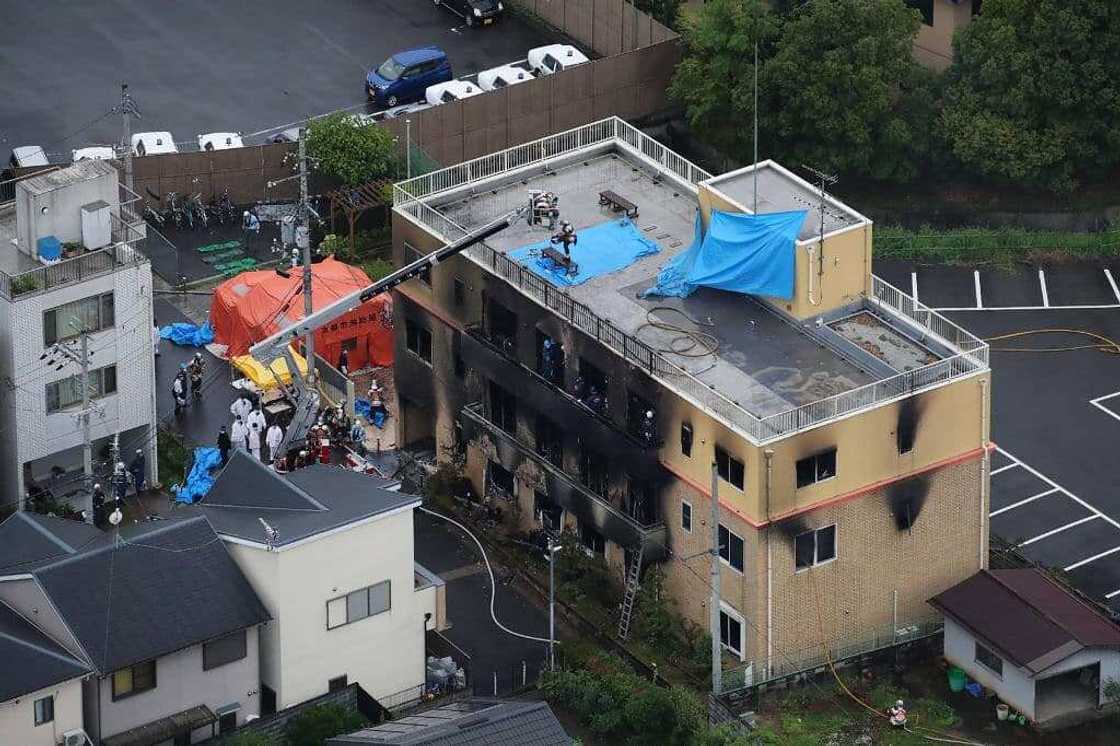On July 18, 2019, a tragic event unfolded at the Kyoto Animation Studio in Japan, leading to the loss of 36 lives. This catastrophic fire not only devastated the studio but also shocked the global animation community. Kyoto Animation, known for its high-quality productions such as "A Silent Voice" and "Violet Evergarden," became a symbol of resilience and creativity in the face of adversity.
The incident sparked conversations about safety regulations within the animation industry and how to better protect creative spaces. As fans and fellow artists mourned, the outpouring of support for the victims' families highlighted the profound impact that the studio had on both its employees and its audience. This article explores the details surrounding the fire, its aftermath, and the lessons learned that continue to shape the industry today.
In the wake of the tragedy, Kyoto Animation received international support and donations, showcasing how art can unite people from various backgrounds. The fire was not just a loss of lives but also a loss of creativity and passion, as many talented individuals were affected. Understanding the implications of this event is crucial as we reflect on the importance of safety and community in artistic environments.
Table of Contents
- Biography of Kyoto Animation
- Details of the Kyoto Animation Fire
- Impact on the Animation Industry
- Lessons Learned and Future Safety Measures
- Final Thoughts
Biography of Kyoto Animation
Kyoto Animation, often referred to as KyoAni, was founded in 1981 by Yoko Hatta and her husband. The studio gained prominence for its unique storytelling and animation style, which resonated with audiences both in Japan and internationally. Throughout the years, KyoAni produced several acclaimed works that garnered numerous awards and a devoted fanbase.
As a studio, Kyoto Animation was known for its commitment to high-quality production values and nurturing its staff through various initiatives, including employee training and offering a supportive work environment. This dedication resulted in critically acclaimed series like "Clannad," "K-On!," and "A Silent Voice," which showcased the studio's ability to connect deeply with viewers.
| Year | Title | Awards |
|---|---|---|
| 2007 | Lucky Star | Tokyo Anime Award |
| 2013 | Free! | Japan Media Arts Festival Award |
| 2016 | A Silent Voice | Tokyo Anime Award |
Details of the Kyoto Animation Fire
The Kyoto Animation fire occurred around 10:35 AM local time, when a man entered the studio and set it ablaze using a flammable liquid. The rapid spread of the fire was exacerbated by the open layout of the building, which was not equipped with adequate fire safety measures. Many employees were trapped inside, leading to a tragic loss of lives and severe injuries for others.
Emergency services responded quickly, but the damage was extensive. Investigations revealed that the suspect had a history of mental health issues, raising questions about how such individuals could access facilities and the need for better security measures in public spaces. The fire not only destroyed the studio but also left a lasting scar on the community.
Impact on the Animation Industry
The Kyoto Animation fire sent shockwaves through the animation industry, prompting discussions about workplace safety and mental health. Many studios reevaluated their safety protocols and sought to create better environments for their employees. The fire underscored the importance of protective measures and resources for mental well-being within the creative community.
Moreover, the incident sparked a global movement advocating for the recognition of the animation profession and its contributors. Fans and fellow creators rallied to support KyoAni, leading to significant fundraising efforts and increased awareness of the challenges faced by animators. This collective response highlighted the strong bond within the animation community and the importance of solidarity during difficult times.
Lessons Learned and Future Safety Measures
In the aftermath of the tragedy, various lessons emerged regarding workplace safety and mental health awareness. Animation studios began to adopt stricter safety regulations to prevent similar incidents in the future. This included conducting regular safety drills, improving building security, and investing in employee mental health resources.
Furthermore, the animation industry recognized the need to support and protect its artists better. Many studios implemented programs focused on mental health, ensuring that employees had access to counseling and support services. By fostering a culture of openness and support, the industry aims to create safer and more nurturing environments for creativity to thrive.
Final Thoughts
The Kyoto Animation fire remains a tragic reminder of the importance of safety and community in creative spaces. As the animation industry continues to honor the lives lost and the legacy of KyoAni, it must also strive to build a future where artists can work safely and with dignity. The lessons learned from this devastating event will help shape a more resilient and supportive environment for all creators.
Through the collective efforts of fans, creators, and industry leaders, we can ensure that the spirit of Kyoto Animation lives on. Let us remember the victims and work together to prevent such tragedies in the future, fostering a culture of safety, respect, and creativity in the animation world.

Source: Instagram
Stunning Looks Of Lisa Omorodion: Fashion Moments That Inspire
Lupita Nyong'o Celebrates Selema Masekela's Birthday With Love And Joy
Nourishing Nigerian Food Timetable For Children: A Complete Guide


